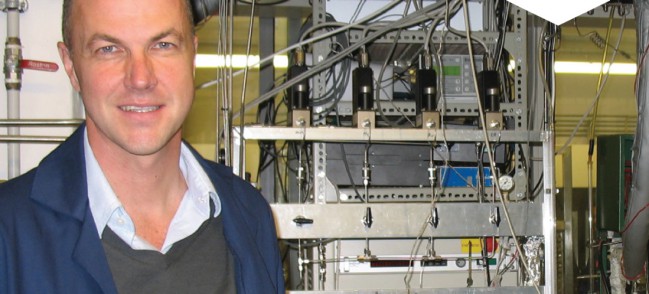The Department of Science and Technology Catalysis Competence Centre (HySA/Catalysis), co-hosted by the Department of Chemical Engineering at UCT and Mintek, continues to make a research impact with its in situ reaction cell for a commercial X-ray diffractometer (XRD).
In 2013, Professor Michael Claeys, the inventor of the XRD cell, together with co-authors Nico Fischer, Brett Clapham, Theresa Feltes and Eric van Steen, published a paper on the use of the device in the respected Angewandte Chemie International Edition – one of the prime chemistry journals in the world with an impact factor of 13.7. The paper was also chosen by the editors as a “hot paper” for its importance in a rapidly evolving field, and artwork depicting the cell’s capabilities was included on the journal’s back cover.
The in situ XRD cell is proving to be a cutting-edge research tool and can be retrofitted to existing X-ray diffractometers or synchrotrons to enable materials such as catalysts to be studied at elevated temperatures and pressures in changeable gaseous or liquid environments. The construction and design overcome a number of shortcomings that restrict the use of current commercial systems and are opening up new areas of research.
Advantages over commercially available in situ cells include minimised dead volume and the possibility of co-feeding gases such as water vapour.
An automated control system for the XRD cell has been developed, whereby the XRD cell can be controlled remotely using a tablet. This control system is particularly useful for synchrotron applications where the instrument itself cannot be easily accessed during operation. A marketable, industrially designed control box has been fabricated, with a holding place for the tablet. A transportation case for the XRD cell, control box and ancillary items has been manufactured.
Collaborative work is being conducted with local industry using international synchrotron facilities. Two units have been sold internationally, in Europe and Asia, and interest has been expressed by other foreign institutions, including a global diffractometer supplier.



Comments are closed.